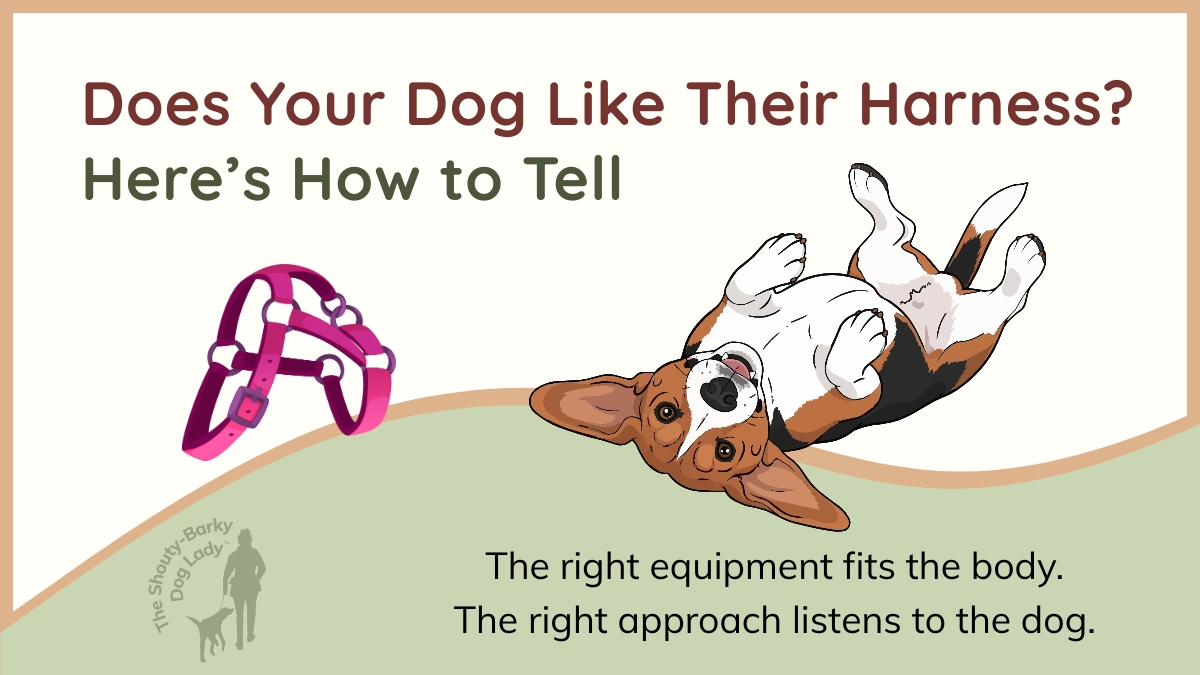Whether it harnesses, muzzles, coats, even tags, it’s easy to focus on whether something fits, but comfort is about much more than straps and buckles. For dogs, the story is written in their body language.
Some dogs bounce towards their harness, eager for what comes next. Others freeze, lick their lips, or quietly turn away. These small signals aren’t stubbornness or misbehaviour - they’re information.
Signs Your Dog May Be Uncomfortable With Their Harness or Muzzle
-
Head turning away as you pick up the harness
-
Lip-licking, yawning, or stepping back as you move closer
-
Stillness or “freezing” while you put it on
-
Shaking off or running about as soon as it comes off
Each of these is your dog’s way of saying something about the experience.
How to Explore Your Dog’s Reaction to Their Equipment
Next time you get ready for a walk, pause for a moment. Offer your dog’s harness (or muzzle, or coat) without moving towards them. Watch what they do:
-
Do they come forward happily and step in?
-
Do they wait, hesitate, or back away?
-
Do you spot subtle signs of stress - lip-licking, turning their head, or going still?
Make a few notes over several days. Patterns often appear, and once you see them, you’ll know where to make small changes that can make equipment time easier and less stressful.
Why Understanding Dog Body Language Matters
When we notice and respond to our dogs’ signals, we build trust. That trust makes daily life smoother, and it helps our dogs feel safer and more understood.
Want to Learn More?
For a deeper dive into this and many other topics, come and be part of the Calmer Canines Club. It’s designed to support both caregivers and professionals with practical ideas, thoughtful discussion, and an extensive resource library.
👉 www.calmercanines.co.uk/club
For Professionals
Helping caregivers notice their dog’s responses to equipment is a gentle entry point into body language work. Inviting them to describe small signals – like a head turn, lip lick, or moment of stillness – without jumping to conclusions builds awareness without overwhelm.
Framing these observations as part of a bigger picture encourages patience and curiosity. It also shifts the focus from “getting the harness on” to recognising the dog’s comfort, choice, and agency. Over time, this approach strengthens the partnership between caregiver and dog, and gives you valuable examples to draw on in your teaching.
 Stephie Guy
Stephie Guy 
